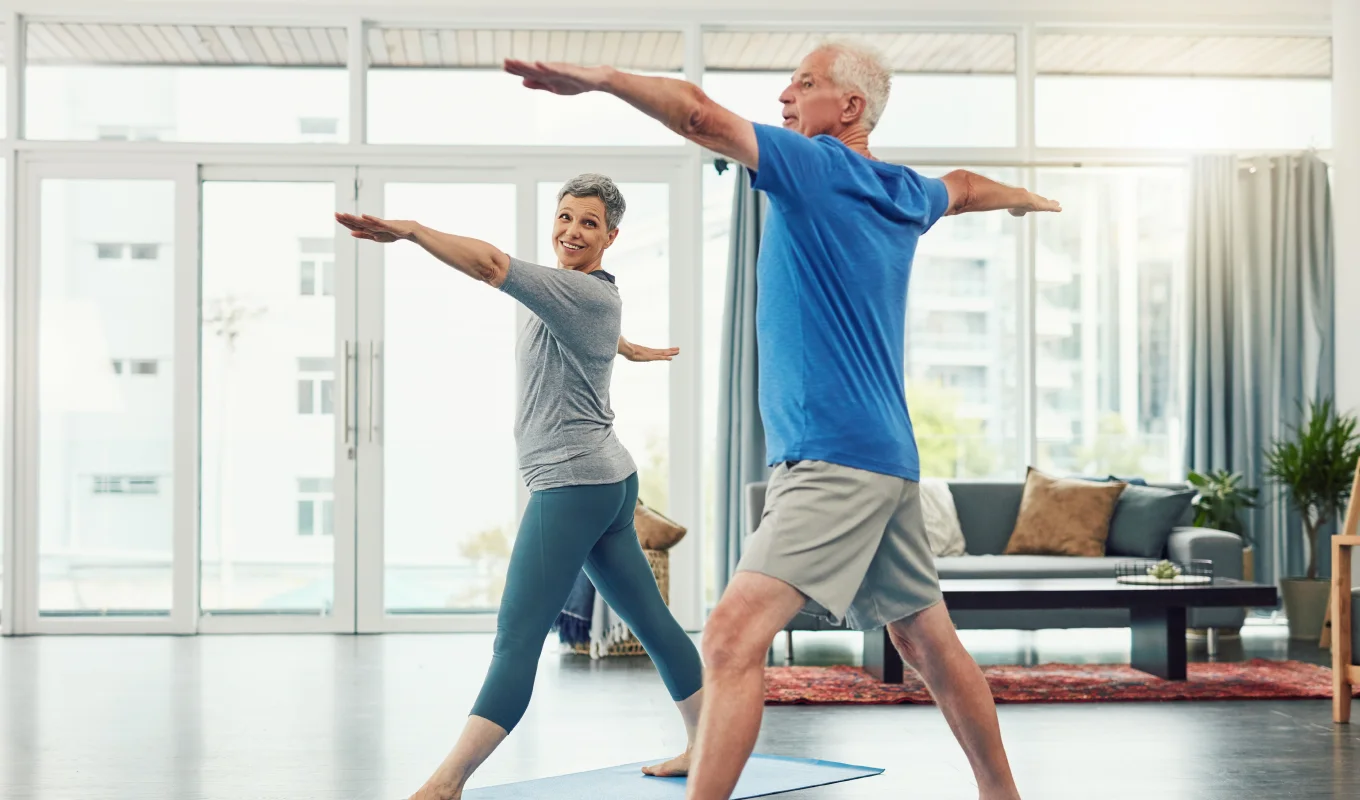Balance is the foundation of our mobility and independence. However, more than 33 million adults in the United
States report a dizziness or balance problem each year. With so many affected, it’s important to take the time to understand the risk factors, and ways to manage and prevent worsening balance issues.
Risk Factors for Falls and Losing Your Balance
When balance is compromised, it can feel like a piece of ourselves is missing. Falls are not completely preventable, but understanding the risk factors can help you take proactive steps to reduce your chances of falling or developing balance-related problems.

- Physical factors related to age
- Impaired vision or hearing
- Muscle weakness
- Medications causing side effects of dizziness and confusion
- Home hazards such as uneven floors, rugs, or stairs
- Excessive alcohol consumption
- Existing medical conditions
- Head trauma or injury
Although these are all general risk factors that may lead to balance disorders, it's important to note special considerations
are needed for patients with comorbid conditions. Conditions like arthritis, stroke, or neurological disorders can complicate
balance problems and treatment.

Physical therapists can adapt treatment to accommodate these conditions, often collaborating with other healthcare professionals to create a comprehensive plan that works best for you.
Tips for Preventing Balance Problems
Preventing balance problems is essential for maintaining independence and reducing the risk of falls and injuries, especially as we age. Early intervention can significantly improve quality of life and prevent future complications.

1. Engage in regular physical activity: Regular exercise helps strengthen muscles, improve flexibility, and enhance balance. This may include activities like walking, dancing and yoga.

2. Choose supportive footwear: Well-fitting shoes with good traction can help prevent slips and falls. Avoid wearing loose-fitting shoes or socks.

3. Lifestyle modifications in your home: Fall-proof your home! This will make it safer and more accessible.
- Remove any tripping hazards such as clutter, rugs, and cords from walkways.
- Install grab bars in the bathroom and near stairs for support.
- Improve the lighting throughout your home. Good lighting is crucial, especially when you’re moving around at night. Many falls happen at night when people are going to the bathroom and navigating dark hallways in their home. Night lights for the bedroom,
bathroom, hallways, and staircases can help prevent falls and other accidents.

4. Incorporate balance training into a home exercise program: Focus on exercises that improve coordination and proprioception. A physical therapist can help guide you on targeted exercises for strength, balance, and gait training. Some
simple daily exercises could include:
- Dual tasking: Maintain your balance while doing 2+ things simultaneously. Many of our daily tasks involve dual tasking, such as walking while talking or reading a sign as we walk down the street. You can incorporate this concept into
balance exercises by adding an extra challenge, like balancing on one leg while reciting the alphabet.
- Navigating unstable surfaces: Engage different sensory systems in your body that contribute to your body's ability to stay balanced. You can practice this by balancing on a mixture of various surfaces – for example, you can try transitioning
between hardwood floors and soft carpets.
- Reactive balance: Test your body's ability to quickly react to unexpected movements or forces. Practicing quick steps or weight shifts through controlled simulations like catching a ball, stepping over an obstacle, or being nudged/bumped.

How Can a Physical Therapist Help with Balance Disorders?
Physical therapy offers a comprehensive approach to restoring function, addressing both the physical and psychological aspects of these disorders. It’s a great option for people with balance disorders, and especially for preventative care in situations
with a high fall risk.
With Luna, you can receive treatment from the comfort of your own home. It’s preventative care, right at your door! In-home, outpatient treatment can be especially beneficial if you have difficulty traveling to a traditional outpatient clinic and helps promote adherence to treatment plans for better outcomes and quicker healing.
If you're concerned about your balance, schedule an appointment with one of our board-certified physical therapists. Being proactive with early intervention and
the right treatment can improve your balance and reduce your risk of falls.








